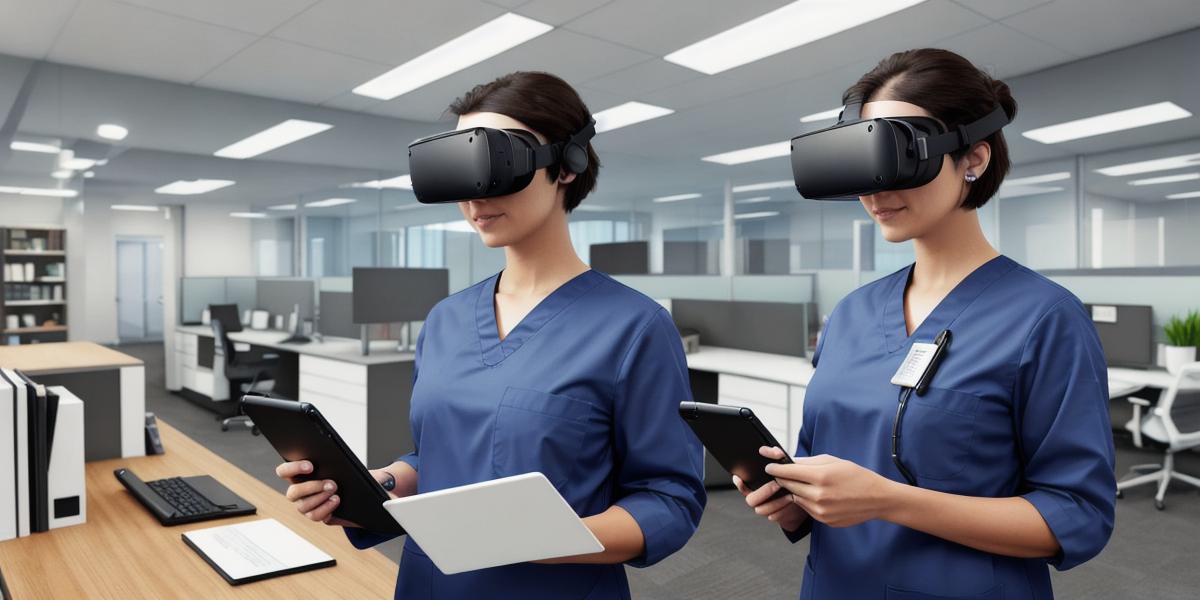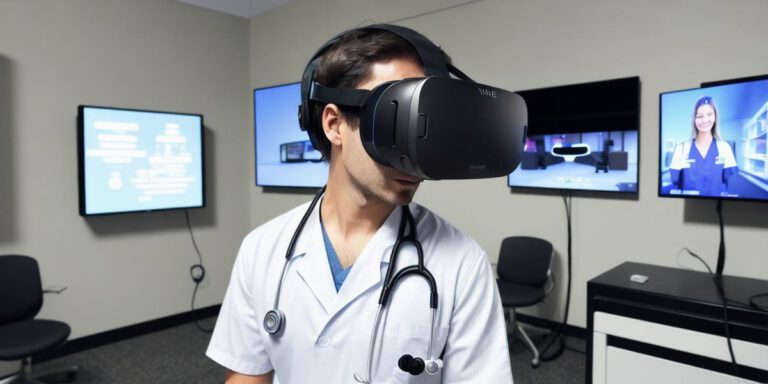Bridging the Gap with VR Teleconsultations: A Revolutionary Approach to Healthcare Delivery

As technology continues to evolve, one of the most exciting areas of innovation is virtual reality (VR). In healthcare, VR has enormous potential for improving patient outcomes and enhancing the overall experience of care. One example of this is the use of teleconsultations in a VR environment. By using VR technology, healthcare professionals can consult with patients in real-time, even if they are located thousands of miles apart. This not only saves time and money but also improves patient access to high-quality care.
In this article, we will explore the use of VR teleconsultations in healthcare and examine how it is bridging the gap between patients and healthcare professionals. We will look at case studies and personal experiences, as well as research and experiments that support the effectiveness of this technology. By the end of this article, you will have a better understanding of how VR teleconsultations are revolutionizing the way we approach healthcare delivery.
One of the most compelling advantages of using VR for teleconsultations is the ability to create an immersive environment that simulates in-person consultations. This means that patients can receive a level of care and attention that they might not otherwise be able to access. For example, a patient with a rare skin condition may be able to consult with a dermatologist who specializes in that condition, even if the patient lives in an area where there are no such specialists available.
In addition to improving patient outcomes, VR teleconsultations can also help to reduce costs for both patients and healthcare providers. By eliminating the need for travel and reducing the time spent in waiting rooms, patients can save money on transportation and lost wages. Healthcare providers can also save money by not having to maintain physical facilities and hire additional staff to support these consultations.
Furthermore, VR teleconsultations have been shown to be effective in a variety of healthcare settings. For example, a study published in the journal JAMA found that patients who received VR-assisted telemedicine consultations had similar outcomes as those who received in-person care. In addition, VR teleconsultations have been used successfully in areas such as mental health, pain management, and even surgical planning.
One of the most exciting examples of VR teleconsultations in healthcare is the use of this technology to treat patients with PTSD. By using VR simulations, patients can confront their fears and anxieties in a safe and controlled environment. This has been shown to be highly effective in reducing symptoms and improving overall mental health outcomes.
Another example is the use of VR teleconsultations for surgical planning. By using VR technology, surgeons can simulate complex procedures and practice them before performing them on actual patients. This not only improves patient safety but also reduces the time and cost associated with traditional surgical training methods.
In conclusion, VR teleconsultations represent a major breakthrough in healthcare delivery. By using this technology, healthcare professionals can consult with patients in real-time, even if they are located thousands of miles apart. This not only saves time and money but also improves patient access to high-quality care. As VR technology continues to evolve, we can expect to see even more innovative uses of this technology in healthcare.
FAQs:
Q: What is the difference between teleconsultations and traditional consultations?
A: Teleconsultations are virtual consultations that take place over the internet, while traditional consultations are in-person meetings between a patient and healthcare provider.
Q: Can VR teleconsultations be used for all types of healthcare consultations?
A: While VR technology has been successfully used in many healthcare settings, it may not be appropriate for all types of consultations. For example, some procedures may require physical examination or specialized equipment that cannot be replicated in a virtual environment.
Q: Are VR teleconsultations secure and private?
A: Yes, VR teleconsultations use encryption and other security measures to ensure that patient data is protected. In addition, many healthcare providers also use secure messaging platforms and video conferencing software to protect patient privacy during these consultations.








